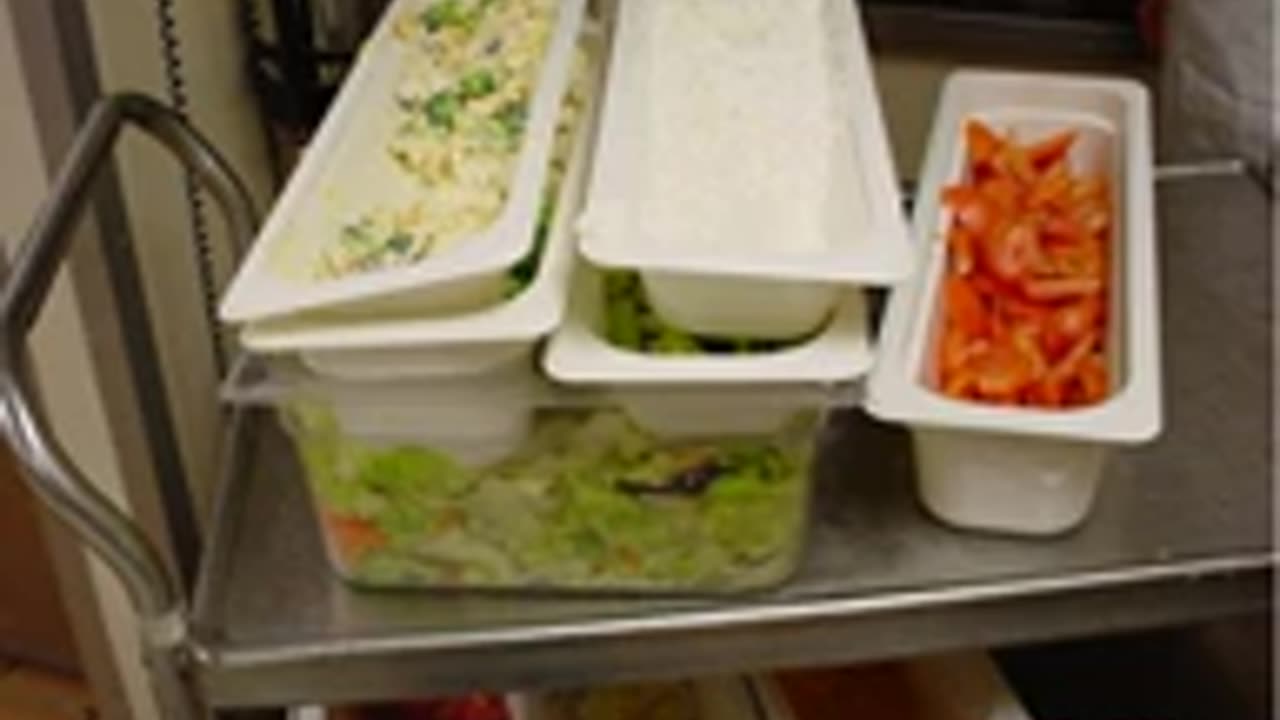Premium Only Content

PART 7_ FDHU FOOD SAFETY FOR FOOD SERVICE EMPLOYEES PART 7_
### **FDHU Food Safety for Food Service Employees - Part 7: Crisis Management, Emerging Risks, and Future-Proofing Food Safety**
Part 7 focuses on advanced crisis management, emerging trends, and preparing food service establishments for future challenges in food safety.
---
### **1. Crisis Management in Food Safety**
- **Developing a Crisis Management Plan:**
- Identifying potential crises (e.g., outbreaks, supply chain disruptions, natural disasters).
- Assigning roles and responsibilities to staff for handling emergencies.
- **Rapid Response to Foodborne Illness Reports:**
- Procedures for immediate investigation and reporting.
- Communicating effectively with customers, media, and regulatory authorities.
- **Business Continuity Planning:**
- Ensuring food safety during emergencies (e.g., backup power for refrigeration).
- Strategies to resume operations quickly after a crisis.
---
### **2. Advanced Food Safety Technology**
- **Predictive Analytics:**
- Using AI to identify patterns and predict contamination risks.
- Leveraging data for better decision-making in food safety operations.
- **Robotics and Automation:**
- Automated cleaning systems for improved sanitation.
- Using robots for food preparation to reduce human error.
- **Smart Packaging:**
- Packaging that monitors freshness and temperature changes.
- Innovations like edible or biodegradable packaging materials.
---
### **3. Addressing Emerging Risks**
- **New Pathogens and Contaminants:**
- Monitoring for previously unknown bacteria, viruses, or toxins.
- Staying updated on global food safety alerts and trends.
- **Climate Change Impact on Food Safety:**
- Adapting to changes in food production and storage conditions.
- Managing increased risks from extreme weather events.
- **Antimicrobial Resistance (AMR):**
- Preventing AMR through safe handling of animal products.
- Minimizing the use of antibiotics in food production.
---
### **4. Collaboration and Communication**
- **Industry Partnerships:**
- Collaborating with suppliers, distributors, and regulators to maintain safety standards.
- Sharing best practices and innovations across the industry.
- **Customer Engagement:**
- Educating customers about food safety practices through menus, signage, and events.
- Responding transparently to customer concerns about allergens or safety issues.
- **Community Outreach:**
- Partnering with local health departments for food safety initiatives.
- Supporting food donation programs with proper safety protocols.
---
### **5. Training for the Future**
- **Next-Generation Food Safety Training:**
- Incorporating virtual reality (VR) and gamification into training programs.
- Providing role-specific training for employees at all levels.
- **Ongoing Certification Programs:**
- Encouraging staff to pursue advanced certifications (e.g., Certified Food Safety Professional).
- Regular recertification to stay updated on evolving standards.
- **Leadership Development:**
- Preparing managers to handle food safety responsibilities effectively.
- Empowering staff to take initiative in identifying and solving safety challenges.
---
### **6. Future Trends in Food Safety**
- **Lab-Grown and Alternative Proteins:**
- Ensuring safety in the production and handling of lab-grown meats and plant-based alternatives.
- **Globalization of the Food Supply Chain:**
- Managing safety risks associated with international sourcing and distribution.
- **Personalized Nutrition:**
- Safely accommodating individualized dietary needs with precision.
- **Sustainability and Innovation:**
- Combining food safety with sustainable practices (e.g., reducing water usage in sanitation).
---
### **7. Building a Resilient Food Safety Culture**
- **Long-Term Vision:**
- Setting food safety goals for the next 5–10 years.
- Investing in technology, infrastructure, and people to achieve lasting improvements.
- **Encouraging Proactivity:**
- Rewarding staff who identify and mitigate risks before issues arise.
- Encouraging innovation and experimentation with safety-enhancing practices.
- **Measuring Success:**
- Using audits, customer feedback, and key performance indicators (KPIs) to assess progress.
---
Would you like to explore one of these sections in greater detail or adapt this into a more specific resource, such as a training guide, checklist, or presentation?
-
 LIVE
LIVE
STARM1X16
2 hours agoMerry Christmas Fortnite
401 watching -
 LIVE
LIVE
Sgtfinesse
2 hours agoMerry Christmas Night
370 watching -
 1:11:38
1:11:38
Film Threat
10 hours agoCHRISTMAS DAY CHILL STREAM WITH CHRIS GORE | Hollywood on the Rocks
115K24 -
 14:22:40
14:22:40
The Quartering
1 day agoYule Log Christmas MAGA Edition With Memes! Come Hang Out!
206K27 -
 38:41
38:41
MYLUNCHBREAK CHANNEL PAGE
1 day agoTimeline Begins in 1800? - Pt 1 & 2
88.1K47 -
 1:23:41
1:23:41
Game On!
1 day ago $12.42 earnedNetflix NFL Christmas Games Preview and Predictions!
79.1K9 -
 2:05:07
2:05:07
Darkhorse Podcast
1 day agoWhy Trump Wants Greenland: The 257th Evolutionary Lens with Bret Weinstein and Heather Heying
308K594 -
 8:50:58
8:50:58
Right Side Broadcasting Network
1 day ago🎅 LIVE: Tracking Santa on Christmas Eve 2024 NORAD Santa Tracker 🎅
406K60 -
 2:48
2:48
Steven Crowder
1 day agoCROWDER CLASSICS: What’s This? | Nightmare Before Kwanzaa (Nightmare Before Christmas Parody)
357K13 -
 33:49
33:49
Quite Frankly
1 day agoThe Christmas Eve Midnight Telethon
145K29